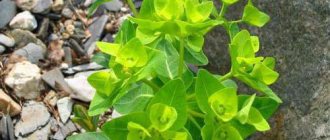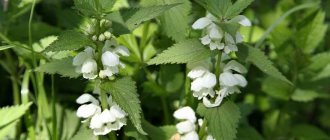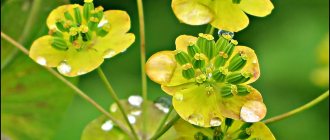Loading…
Loading…
Not everyone knows about the medicinal properties of the agave plant. And this is not surprising, because the culture is not very popular in our latitudes. Agave is an evergreen flower native to America. It is used to prepare alcoholic drinks, threads, and is also used in folk medicine to treat many diseases.
Plant composition
Agave not only has an attractive appearance, but also has many beneficial components. Since the plant grows in the wild in arid areas, it is able to retain a large amount of moisture in its leaves. Each leaf consists of 81% water.
The composition of the agave plant is not fully understood.
Agave is rich in:
- carbohydrates;
- ash substances;
- proteins;
- fats;
- alimentary fiber;
- fructose;
- glucose;
- starch.
In addition to these nutrients, the leaves contain amino acids important for the human body. These include arginine, lysine, tryptophan, valine.
Agave juice contains vitamins C, B1, B4, B5, E, K and PP. Macroelements include potassium, sodium, calcium, phosphorus, and magnesium.
Steroid saponins influence the synthesis of hormonal substances. They can also have a beneficial effect on reproductive function.
Medicinal properties of the agave plant
Fresh leaves and juice of the agave plant were used by the Aztecs. They used them to heal wounds, cuts, and abscesses.
The most effective are leaves that are 3 years old.
Nowadays, the plant is used to treat bladder diseases. Also used for bruises and bruises. The mucus from the leaves is used to relieve toothache.
The plant helps get rid of diseases that affect:
- liver;
- stomach;
- lungs.
The juice from the leaves is a laxative and diuretic. It also has a beneficial effect on the nervous system, restores metabolism, and normalizes throat function. Freshly squeezed agave juice improves sputum separation and is also a good antipyretic.
Agave americana
Table of contents
In medicine
Research on agave americana is carried out in different countries. The plant contains a large amount of sugar, so it is ideal for preparing various drinks. The juice has a special composition that is very easy to turn into alcohol. But it is often used to treat joint diseases, snake and insect bites. It promotes pain relief and relieves inflammation.
The most pronounced beneficial properties are found in plants that have reached the age of 3 years; before that, agave is only gaining its strength. The leaf pulp contains inulin, which helps control body weight and promotes rapid weight loss. Dinordrin and anordrin are contraceptives and are recommended to be taken only 1-2 times a month to get the desired effect. These properties of the plant were discovered by Chinese scientists and are now being introduced into the pharmaceutical industry.
Contraindications and side effects
Agave may cause an allergic reaction when used externally. Usually manifests itself in the form of burning or itching. If these symptoms occur, you should stop using this plant. Ingestion is prohibited for people with liver and gallbladder diseases. Possible improper breakdown of the sugars included in the composition, which leads to bloating, a feeling of heaviness, nausea and bitterness in the mouth.
In cooking
In Mexico, a drink made from the juice of the American agave plant, pulque, is very popular. Collecting the necessary liquid takes several days. The central bud is cut out of the plant and a hole is made into which the juice is collected. The device allows you to collect 5-6 liters in a day; you can collect a whole barrel in a week. Then the liquid ferments for some time and turns into a good alcoholic drink. After use, the plant dies, as it cannot create a flower-bearing arrow, and is also depleted from the production of a huge amount of liquid. Agave juice is also used to make tequila, and this Mexican drink is known throughout the world. The preparation process is similar to the technology for creating moonshine.
Agave juice is also very pleasant for bees; they use it to collect honey. Agave honey has a special aroma and taste that is suitable for many desserts.
A sweet syrup is made from agave juice; it tastes like caramel. This natural low-calorie sweetener is suitable for dietary purposes. It is used in cocktails, desserts and even in sweet soups that are present in Mexican cuisine.
In Central America, people use agave leaves to create various ropes. Using a simple technology, it is easy to obtain a rope or a tourniquet from the fleshy part, and wrapping paper is made from the remaining pulp.
Classification
Agave belongs to the agave family (Agavaceae). There are more than 300 species of this plant found in the world. They come from the desert regions of America. In Russia, the American agave (Agave americana) is most often found as an ornamental house plant or park crop in the southern regions of the country.
Botanical description
Agave americana is a perennial herbaceous plant. The plant forms a powerful rosette of leaves without a particularly pronounced ground trunk. The number of leaves in a rosette of an adult plant reaches three dozen. The leaves have a linear-lanceolate shape, tapering towards the apex, the length of large ones varies from 1 to 2 meters, and the width from 20 to 25 centimeters at the widest part. The thick, fleshy, gray-green color is covered with spines along the edges of the leaf blade, and at the top of the leaf there is an awl-shaped point, the length of which reaches 3 centimeters.
Each leaf lives for a long time, from 10 to 15 years, the main part of it dies off along with the plant itself. Agave is considered a monocarpic plant; they can bloom and bear fruit only once in their life, and then die off.
All individuals of the American agave live in the form of rosettes of leaves (with a powerful root system) both in natural conditions and when artificially grown in open ground for 10 - 15 years, and in greenhouses and in special rooms for 20 - 30 years.
In the last year of the plant’s life, a leafless flower arrow sprouts in the center of the leaf rosette, the length of which reaches 8 meters, ending in a large panicle inflorescence, where there are about several thousand yellowish flowers.
The length of large flowers is 7-9 centimeters. Each flower has a simple corolla-shaped 6-membered perianth and 6 stamens with a pistil and an inferior ovary. Flowering of American agave in Russia usually occurs at the end of May and lasts for 2 - 3 weeks.
Article on the topic: Edible honeysuckle - beneficial properties, description
The fruit ripens in November, after which the plant dies. Reproduction occurs through seeds and root suckers. At sufficient temperature (within 20 - 25 ° C), the seeds germinate in 5 -7 days. The plant is particularly light-loving, which is necessary to know when growing agave artificially, especially indoors. The American agave is native to Mexico. Introduced into cultivation as an original and ornamental plant.
Spreading
Procurement of raw materials
Agave is harvested for medicinal and food purposes at any time of the year. Only mature agave leaves are suitable; the ideal period from planting to harvesting is at least 3 years. The leaves are collected, the juice is squeezed out, the moisture is evaporated, and the result is a green powder with a bitter taste.
Chemical composition
Pharmacological properties
In Mexico, agave is a very popular and versatile plant. It is used for food, squeezing juice for drinks. But the leaves and roots are also considered medicine for the local population. Most often they are used to treat neurological diseases. If you suddenly experience pain in the joints or spine, you should use agave leaves, applying them to the sore spot. To do this, you need to cut part of the plant lengthwise, remove the thorns and make a compress. A slight burning sensation is a sign of treatment and will gradually decrease. Carrying out this procedure at least 10 times will give a noticeable effect.
You can apply agave leaves to bruises and bruises. An option for treating such phenomena would be to rub agave juice into the sore spot; it will relieve pain and reduce inflammation in that area of the body.
Agave is used in Mexico to treat colds. Infusions from the leaves relieve fever and help strengthen the immune system. An infusion from the root of the plant gives strength for sexual problems in men and gives them confidence. For women, this is a remedy for inflammatory processes. But agave must be used very carefully in treatment; an overdose of the plant can cause poisoning.
Agave can be compared to aloe. They even have some of the same properties outwardly. Both of these plants are used for treatment, but each in its own area of the world. Consult your doctor before experimenting with these leaves.
Use of agave in folk medicine
To improve your health, it is enough to follow the conditions for preparing the products. If everything is done correctly, then achieving the desired result will not be difficult.
To prevent agave tincture from causing irritation, it is necessary to fill the plant with hot water.
Agave tincture for conjunctivitis
In order to prepare the product, you will need to pour a glass of boiling water over a small part of the leaf plate and leave at room temperature for 1 hour. Then add 0.5 tsp of liquid honey and mix thoroughly. Wipe your eyes with a cotton pad. The number of procedures depends on the person’s condition.
Agave for jaundice
Cut off the leaves and rinse thoroughly under running water. Then divide them into long strips and leave them at room temperature to dry. Grind the finished raw materials using a coffee grinder. Agave powder should be consumed 0.2 - 0.5 g three times a day, washed down with boiled water.
An infusion from the agave plant also helps well with jaundice. To prepare it, you need to fill a leaf (medium size) with 250 ml of cold water (boiled). Infuse the product for at least 6 hours. Take this remedy 1 tbsp. l before each meal.
Agave oil helps cope with furunculosis.
For osteochondrosis
An infusion is prepared from a plant leaf and alcohol in a ratio of 1:10. Infuse the product for 14 days. At the end of this time, strain the liquid. Use no more than 10 drops at a time. Take the infusion only before meals.
Agave leaves for dropsy
To get rid of this problem once and for all, you need to use fresh plant juice. To do this, the leaves are passed through a juicer. The resulting liquid is diluted with water (2 tbsp water and 1 tsp juice). Take the infusion 2 tsp 3-4 times a day.
For gastrointestinal ailments
A remedy is prepared based on agave infusion (as for jaundice) and a decoction of wormwood. To make an effective medicine, you need to combine 1 part wormwood and 5 parts agave. Mix the components thoroughly and take 2 tsp three times a day.
Treatment recipes
You can buy agave nectar (250 g) of different types in online stores: dark for 314-340 rubles. and light for 350-397 rubles.
It is added to any drinks and used in the preparation of desserts and baked goods. With a relatively low calorie content (305-340 kcal/100 g), the syrup is 1.5 times sweeter than sugar.
Manufacturers claim that consuming syrup instead of sugar in small quantities is beneficial for the body. This is expressed in increased tone, strengthened immunity, normalized gastrointestinal tract functions, decreased appetite, and strengthened bones.
Article for you:
The sequence: medicinal properties and contraindications, use in folk medicine and cosmetology
External use of agave
The leaves are often used to get rid of sciatica. They are also used for sciatica. To do this, you will need to grind a leaf (200 g) to a pulp. Apply the resulting mixture to the problem area and wrap it with polyethylene. It's better to do this before bed.
For purulent wounds, the leaf is cut lengthwise and applied with the cut to the affected area, securing with a bandage. The plates should be changed frequently. If everything is done correctly, then within a few hours you will feel relief.
To treat joints, combine 100 g of leaf pulp and 1 liter of vodka. After a week, the product can be used. You should rub problem areas every day for a month. It's better to do this before bed. After application, the leg will need to be wrapped in a woolen scarf. In the morning, remove everything and rinse the knee generously with warm water.
Contraindications to the use of agave-based products
Since the juice of the plant has a specific odor and can cause irritation of the mucous membrane, it is not recommended for use during an exacerbation of peptic ulcers or gastritis. Also, those who are planning to have a child in the near future should not use infusions and decoctions. This is due to the fact that some substances found in the leaves can reduce reproductive functions.
People with sensitive skin should not use the plant juice. Even a small splash of liquid can cause a burn. Therefore, before starting treatment, it is recommended to apply a little product to the skin in the wrist area and wait a while. If a rash and redness do not appear, then agave can be used for treatment.
Agave medicines are the best remedy to get rid of many health problems. But despite all the positive qualities of the plant, we should not forget about contraindications.
Solving cosmetic problems
Agave leaves, which perfectly cope with inflammation and quickly heal skin lesions, are used in home cosmetology to solve a variety of problems.
For face
The plant juice, saturated with many active compounds, effectively moisturizes, softens, and refreshes the skin. After use, elasticity is restored.
It is recommended that before going outside in sunny weather or going to the beach, dilute the juice in equal parts with distilled water and apply to open areas. This technique ensures an even tan with a pleasant golden hue.
For acne
When acne appears, it is practiced to apply agave juice directly to the pimples using a cotton swab. The procedures are performed three times a day.
You can treat the problem area with heavy rashes in the morning and evening with a cleansing lotion made from agave juice and olive oil in identical quantities.
For hair
A sulfate-free shampoo is produced based on agave juice, which can be purchased for 440 rubles. Targeted at combination hair types, characterized by dry ends and oily roots.
Article for you:
Medicinal properties of the herb oregano (oregano) and its use in folk medicine
Gently affects the structure of the hairs, giving the hair silkiness. Natural shine gradually returns, the functioning of the sebaceous glands is normalized, and growth is activated. Curls become obedient and strong.










